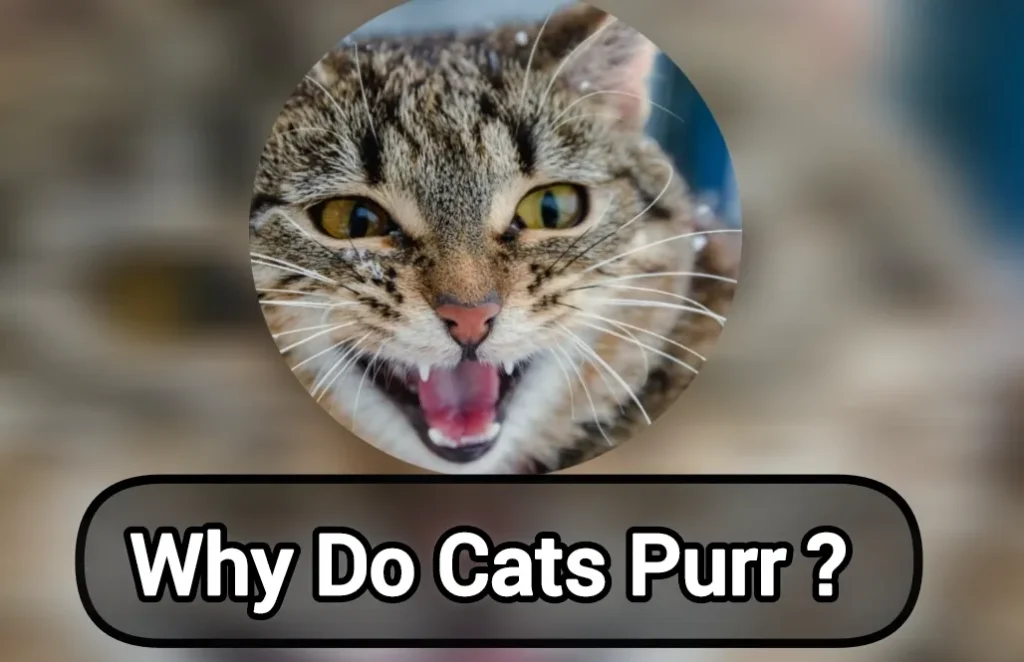Table of Contents

Cats are enigmatic creatures with an array of vocalizations that capture the attention of pet owners and animal lovers alike. Among these, purring stands out as one of the most iconic sounds associated with our feline companions. But why do cats purr? This question delves deeper into the emotional and physiological aspects of our cats, revealing a rich tapestry of meanings behind this soothing sound. In this comprehensive guide, we will explore the science of purring, its various meanings, and how to interpret your cat’s purring in different contexts.
What is Cat Purring?
Purring is a unique sound produced by cats, often described as a continuous, rhythmic hum. Typically, this sound is generated when a cat expels air from their lungs over the vocal cords while simultaneously relaxing their throat muscles. This intricate process creates the characteristic purring sound that many associate with comfort and affection.
The Science Behind Purring
The mechanism behind purring begins with the cat’s brain, which sends a neural oscillator signal to the voice box (larynx). This oscillator causes the muscles within the larynx to rapidly contract and relax at a rate of 25 to 150 vibrations per second, allowing air to flow in both directions—during inhalation and exhalation. This unique ability results in the soothing sound of purring, which can be heard easily in quiet environments.
Interestingly, cats can purr while breathing, meaning it is a voluntary vocalization rather than an involuntary reflex. This characteristic adds depth to the understanding of why do cats purr, emphasizing that it is more than just a sign of contentment.
Reasons Why Cats Purr
1. Contentment
One of the most well-known reasons for purring is a state of happiness or contentment. When a cat is relaxed—perhaps while lounging in a sunny spot or nestled in their owner’s lap—they often emit a gentle purr. Signs of a content cat may include:
- A relaxed body posture
- Slow, comfortable breathing
- Soft, half-closed eyes
These indicators suggest that your cat is comfortable and enjoying their surroundings.
2. Anxiety
Purring can also occur in situations of anxiety or stress. Cats may purr when they are feeling uneasy, such as during vet visits or in unfamiliar environments. This behavior may serve as a self-soothing mechanism to help them cope with stress. Indicators of an anxious purring cat include:
- Agitated body language
- Alternating between purring and meowing
- Restlessness or pacing
Recognizing these signs is essential for responding to your cat’s emotional needs during challenging moments.
3. Greeting
Cats often greet one another and their human companions with a short purr. This vocalization serves as a friendly acknowledgment and can strengthen the bond between cats and their owners. During these moments, your cat may approach you with an upright tail and a relaxed demeanor, indicating they wish to connect.
4. Soliciting Attention
Another common reason why do cats purr is to seek attention. Cats have learned that purring can elicit affection and physical contact from their owners. When your cat bumps against you, purring softly, they are likely requesting a scratch behind the ears or some quality cuddle time.
5. Illness or Pain
While purring is often associated with positive emotions, it can also be a sign that your cat is unwell or in pain. Cats may purr to communicate their discomfort or as a way to seek care from their owners. If your cat displays other signs of distress, such as lethargy, refusing to eat, or changes in behavior, it may be time to consult a veterinarian. Notably, some cats will continue to purr even as they approach the end of their lives, using the sound as a source of comfort.
The Role of Kittens in Purring
Kittens play a significant role in understanding the phenomenon of purring. Interestingly, they can begin purring as early as two days old, primarily during nursing. This early purring serves several important functions:
- Bonding with the Mother: The soothing sound of a kitten’s purr helps to establish a strong bond with their mother. It reassures the mother that her kittens are content and thriving, encouraging her to continue providing care and nurturing.
- Communication: Purring is an effective form of communication among kittens. It allows them to signal to their mother and littermates that they are comfortable and safe, as well as facilitating interaction with their siblings during play.
- Encouraging Nursing: When nursing, kittens purr to communicate their satisfaction and encourage continued feeding from their mother. The sound reassures the mother that her kittens are feeding well, promoting healthy growth and development.
- Social Interactions: As they grow, kittens continue to use purring in social contexts, such as greeting siblings or interacting with playful peers. This social aspect of purring helps kittens navigate their early relationships, shaping their future interactions as adult cats.
Purring is a complex behavior that serves multiple functions beyond expressing happiness. From communication and social bonding to self-healing and stress reduction, purring is an integral aspect of feline behavior that continues to intrigue scientists and cat enthusiasts alike. While much has been discovered about the mechanics and purposes of purring, it remains one of the many endearing mysteries of our feline companions.
You Might Like: How Many Ounces in a Quart?
